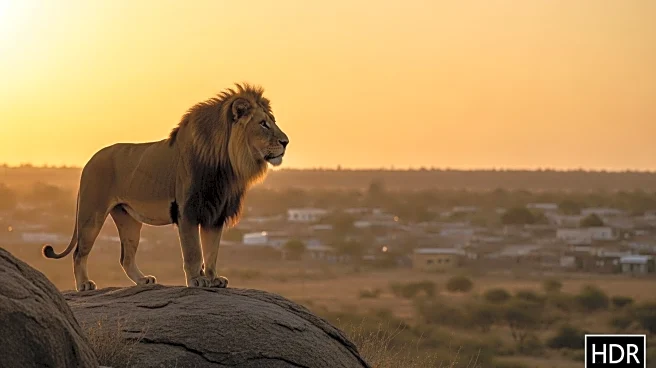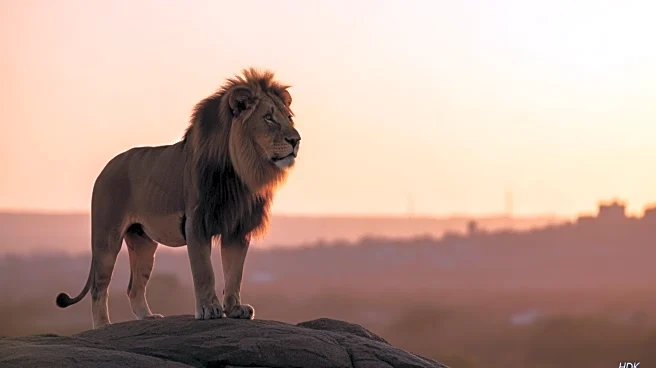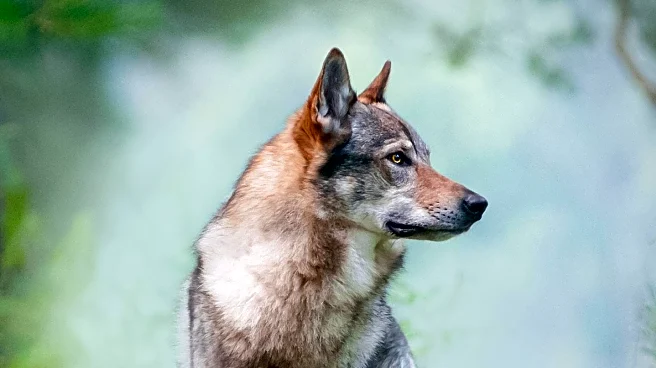What's Happening?
India's Asiatic lion population in Gujarat has increased by 30% over the past five years, reaching 891 individuals. This growth has led to more frequent interactions between lions and humans, resulting in over 20 fatal attacks in the last five years. Conservationists attribute the population increase to successful conservation efforts and a unique human-lion relationship where locals benefit economically from the presence of lions. However, as lions venture into human-dominated areas, the risk of attacks rises, prompting calls for relocating some lions to other habitats.
Why It's Important?
The growing lion population in Gujarat highlights the challenges of wildlife conservation in densely populated areas. While the increase in lion numbers is a conservation success, it poses risks to local communities and livestock. The situation underscores the need for balanced conservation strategies that protect both wildlife and human interests. The potential relocation of lions to other habitats could alleviate human-lion conflicts but faces resistance from local authorities and tourism stakeholders who benefit from the lions' presence.
What's Next?
Conservationists have been advocating for the relocation of some lions to the Kuno Wildlife Sanctuary in Madhya Pradesh, as ordered by the Supreme Court of India in 2013. However, the presence of cheetahs in Kuno may delay this plan by up to 20 years. The Gujarat government has proposed moving lions to the Barda Wildlife Sanctuary within the state, but concerns about its viability persist. The ongoing debate over lion relocation reflects broader challenges in wildlife management and conservation policy.
Beyond the Headlines
The situation in Gujarat raises ethical questions about human-wildlife coexistence and the responsibilities of conservation efforts. The unique relationship between locals and lions, where economic benefits outweigh risks, is rare globally. However, the increasing lion population tests this coexistence, highlighting the need for innovative solutions that respect both human and animal needs. The potential for disease outbreaks among the concentrated lion population further emphasizes the importance of diversifying habitats.











